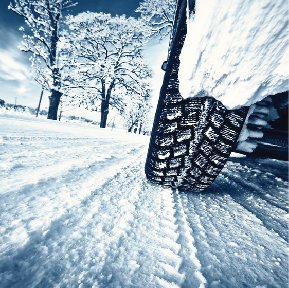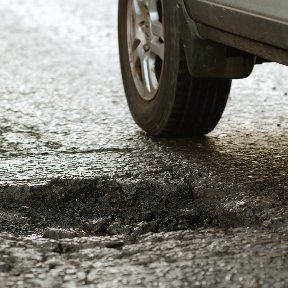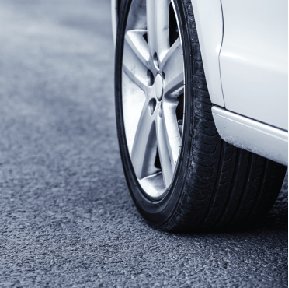WINTER SEASON
Winter driving conditions can be quite dangerous, which means if you need to be outside, you should prepare yourself and your vehicle wisely. Remember that in winter weather, stopping is often the hard part, and it's the tires that do the stopping. So take proper care of them. They are a critical part of the three-member team - your car, your tires, and you - that can get you through the winter safely if you follow the rules.

First, think about your tires. Are they rated as all-season tires? You might think about investing in winter tires (formerly called dedicated snow tires) if you live in a snowy area. Remember, it is important to see your tire dealer for proper installation of winter tires on your vehicle.
Are they properly inflated? The answer may well be "no," because as the temperature outside drops, the air inside a tire contracts and the pressure drops - one or two pounds for every ten- degree drop. Contrary to common belief, under inflation does not give tires better traction in the snow, it only makes them more vulnerable to damage. Winter or summer, your tire's worst enemy is under inflation. Of course, you should check your tires when the weather turns cold, and bring them up to correct pressure.
Second, remember that no matter what kind of vehicle you drive, you still are driving on only four tires, just like everyone else. Four-wheel drive may help you go better in the snow, but it won't help you stop better, or keep you from skidding. Don't let your four-by-four make you overconfident!
Third, let your tires do the job they are designed for. They can keep you out of trouble if you use them correctly:
- Avoid sudden movements of the car. Accelerate gently. Turn gradually. Easy on the brakes when stopping. Those are ways to let the tread on your tires maintain good traction. Spinning or sliding tire means your vehicle is out of control.
- If you do go into a skid, and your car has an anti-lock braking system (ABS), apply steady pressure to the brakes and turn in the direction of the skid. Don't pump the brakes.
If you get stuck in the snow, spinning your tires too fast can overheat them to the point where they will explode and cause injury. Rocking your vehicle gently back and forth is the correct way to get out of a problem. If your vehicle has ABS brakes, follow the instructions in the owner's manual.
Courtesy of the Rubber Manufacturers Association
POTHOLE SEASON
In our area of the country, the snow and ice of winter have left roads in bad shape. The repeated freezing and thawing of moisture seeps through road surfaces and causes potholes.
Keep these driving tips in mind this spring as you travel:

• Hitting potholes can throw your car's front end out of alignment. If you feel your car "pulling" during driving, that's a clue that you could have a problem. Check the tread on your tires: uneven tread wear can be a sign of misalignment. If you hit a severe pothole, have us check your vehicle's alignment and tire balance.
• When you hit a pothole you can damage your tire and/or the metal wheel of your vehicle. Keeping your tires properly inflated will help reduce damage from potholes and other road hazards.
• The impact of potholes on tires increases dramatically with speed and can cause hidden, internal damage that could lead to tire failure weeks, or even months, later. It is best to avoid potholes entirely, but if that's not possible, don't brake during pothole impact. Instead, apply brakes before hitting a pothole and release them just prior to impact. Braking during the impact sets up the tire and wheel assembly for a "solid hit" against the edge of the hole. Less severe damage occurs when a tire is rolling than when it is skidding over a hole during braking.
Give us a call and set up your FREE alignment check appointment. We'll have a look. If your vehicles alignment is fine we'll let you know. If your vehicle is out of alignment, we will advise you before any work is done.
SUMMER SEASON
From the Rubber Manufacturers Association
(ARA) – Warm weather, sunshine and lower gas prices may get more motorists on the road this summer. If you'll be among them, now is a good time to prepare your vehicle -- and especially its tires -- for summer road trips.
When was the last time you checked the air pressure in your tires? Most people have never checked it, says Larry Wolf, an automotive technology program instructor at WyoTech in Fremont, Calif. He explains that most drivers are not aware of how often they need to check their tires. "The need for regular oil changes and annual tune-ups is pretty common knowledge. But consumer knowledge about tire safety unfortunately remains low," Wolf says. The Rubber Manufacturers Association found that 29 million drivers believe that tires require no regular maintenance. Wolf stresses that drivers should check their tire pressure regularly, approximately once a month. "Driving around on under-inflated tires or worn tires can have serious consequences on your ability to control your car, especially in bad weather," he says. Unfortunately, the RMA also found that only 11 percent of drivers correctly check their tire pressure once a month.
 "Essentially, under-inflated tires concentrate the weight of the car on the tread under the sidewalls, instead of evenly distributing the car's weight throughout the tire," says Wolf. "What that means is that the sidewall is continuously being squished, and becomes very hot, posing additional risks to the car and driver. Eventually, a tire that is significantly under-inflated can blow out from the stress and heat that builds up."
"Essentially, under-inflated tires concentrate the weight of the car on the tread under the sidewalls, instead of evenly distributing the car's weight throughout the tire," says Wolf. "What that means is that the sidewall is continuously being squished, and becomes very hot, posing additional risks to the car and driver. Eventually, a tire that is significantly under-inflated can blow out from the stress and heat that builds up."
Currently, a tire under-inflated by 30 percent is the government's minimum safety standard. If a tire is under-inflated by more than that percentage, it's considered unsafe to drive.
Over-inflation can be similarly dangerous, according to Steven Fernandez, an automotive technology program instructor at WyoTech. Fernandez cautions that over-inflated tires prevent the car from maximizing tread contact with the road.
He suggests that in addition to a monthly check on tire pressure, you also give your tires a monthly "glance over" to look for other telltale signs of damage. Drivers should look for uneven wear patterns and examine tire sidewalls for cuts or bulging. "Uneven wear patterns could mean you are having alignment problems and may need to realign your steering wheel or replace suspension parts," Fernandez says. "Bulging or cuts in sidewalls are also potentially dangerous, as they could lead to a tire blowout."
You should check the tread depth of your tires each month. "There are a number of easy ways to check tire tread, including inexpensive gauges or even just a ruler," says Fernandez. The legal limit is set at 2/32 inches, but automobile experts universally agree that driving around on anything less than 3/32 inches is unsafe, especially in rainy conditions.
Aquaplaning, or hydroplaning as it is also called, is many drivers' worst nightmare and it is a big concern during summer travel months. It happens when a car's tires lose contact with the road due to pockets of water. Fernandez explains that the chance of hydroplaning is much more likely when tire tread is low. "Tire treads are grooves in the tire that help to disperse water and increase traction on the road. When they wear down, they aren't able to redirect water nearly as effectively." Too often, when drivers find themselves at the mercy of slippery weather conditions, it's because their tires are not up to par.
Summer often means long road trips -- with the whole family, pets and lots of gear loaded into the vehicle. Drivers should always check their tire pressure before long trips with fully loaded vehicles. "A little tire maintenance now can help ensure a safe vacation down the road," says Wolf.
